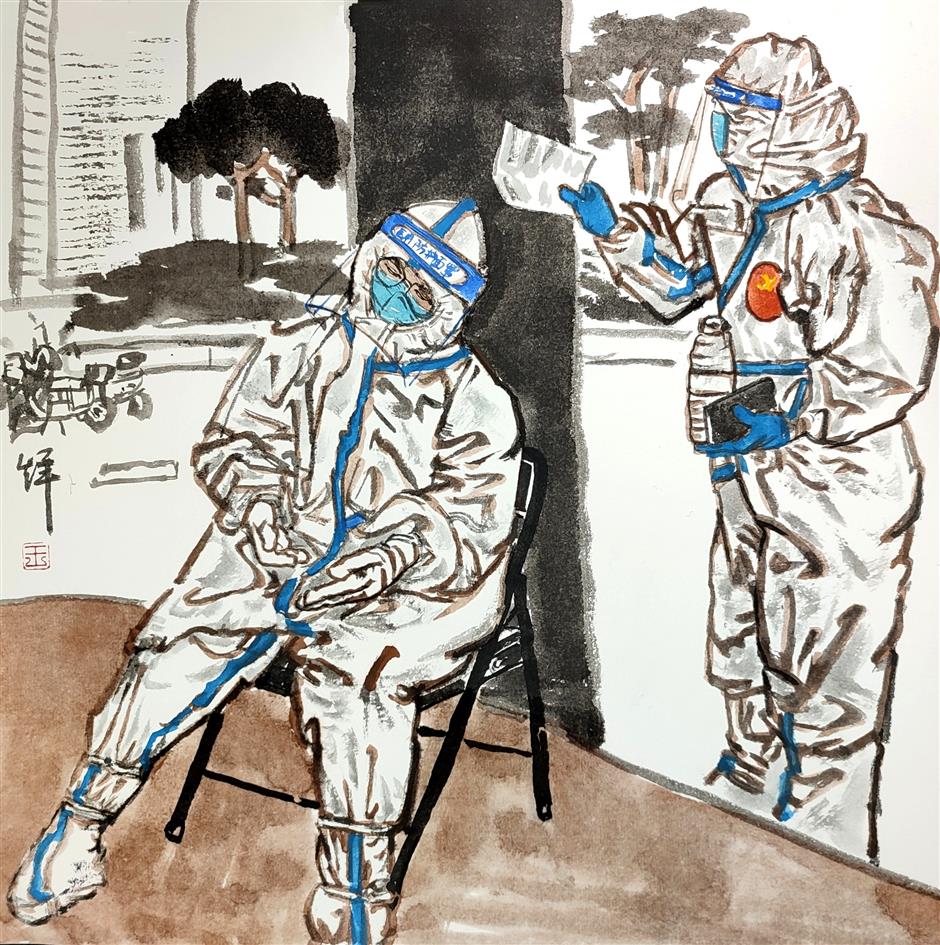Ink-wash illustrations are a unique lockdown diary

Chinese ink-wash painter Wang Hui's "lockdown diary."
Shanghai may be under strict lockdown, but art is not.
Chinese ink-wash painter Wang Hui, in suburban Songjiang District, uses brushes and palettes to illustrate his love for the city and his utmost respect for those who offer a helping hand to the community during these difficult days.
As a volunteer daytime patrolman in the Shangshangyuan neighborhood where he lives, Wang takes his camera with him each time and captures the moments that touch him. Back home at night, the painter revives what he sees and feels with ink and pigment on paper.

The chief of security guards at Shangshangyuan neighborhood, where Wang lives, transport goods for residents.
"As an art practitioner, I have the the duty to record what's happening in the era we're in," he said. "I'm happy that I can make my contribution to my community. I hope the portraits of these volunteers I've painted can bring them some comfort, as well as show my gratitude for them."
In one picture, four dabai or "big whites" (a loving nickname for the medical workers as they're dressed in all-white hazmat suits) are making "heart" gestures in the neighborhood's central park. They are the nurses from neighboring Zhejiang Province Children's Hospital helping with PCR tests.

Four "big whites" are making "heart" gestures in the neighborhood's central park.
"They didn't know I painted them," Wang said. "I sent the painting before they left, and the nurses were so excited that they made a video to thank me. Actually they are the people who should be thanked."
Since April 1, the day when the city's west side of the Huangpu River was placed under lockdown, Wang started his "lockdown diary" by painting. So far he has filled 10 sketch books with dozens of drawings ― anything from a random doodle to a well-composed tableau.
The lines are sprawling and flowing in a free and relaxing way, tinted with simple colors and large patches of black hues. Though he doesn't stick too precisely to the details, Wang elaborates on the wrinkles on the hazmat suits, the body gestures or movements of the characters, and the expressions in the eyes when the faces are hidden behind the masks.

An exhausted worker is cared for.
In another painting, a dabai drops into a chair, exhausted with a tilted head. Her fellow colleague is fanning her face with a sheet of paper.
"That was a hot day, and the nurse might be dizzy after long hours of work wrapped in airtight protective garment," the painter recalled.
Wang donated one man-size picture that portrays a volunteer carrying five heavy bags of food supplies on his back. It's now hung on the door wall of the neighbourhood committee's office.
"It's my way to thank everyone who helps," he said.


















